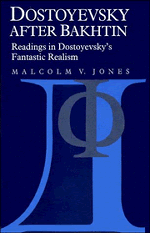Book contents
3 - Notes from Underground: the discovery of ‘the underground’
Published online by Cambridge University Press: 21 August 2009
Summary
THE TRANSITION
A great deal happened to Dostoyevsky between the writing of The Double in 1847 and Notes from Underground in 1864 and he published a great deal as well. It stands to reason that this cannot be ignored in any comprehensive treatment of the development of his writing. However, that is not my aim here as I indicated in my preface.
The idea for The Double and the discovery of ‘the underground’ are related in various ways. On the one hand Dostoyevsky described Golyadkin as an underground type; on the other he was writing Notes from Underground and trying to rewrite The Double at much the same time. This does not seem like mere coincidence. Even if it was, it is a convenient one for my purposes. Whereas the underground leads Golyadkin to madness, it leads the more intelligent and educated hero of Notes from Underground to a state of mind perhaps best described as ‘ideologically validated resentment’, though that scarcely does it justice.
In Notes from Underground Dostoyevsky effectively solves some of the structural problems which are often felt to spoil The Double. As we have seen, if you ask the question ‘what really happened?’ of The Double you get no answer which you can clearly distinguish from an answer to the question ‘what did the hero experience?’ Yet the story is told in a narrative voice and with an original focus more appropriate to the first question than the second.
- Type
- Chapter
- Information
- Dostoyevsky after BakhtinReadings in Dostoyevsky's Fantastic Realism, pp. 59 - 74Publisher: Cambridge University PressPrint publication year: 1990



